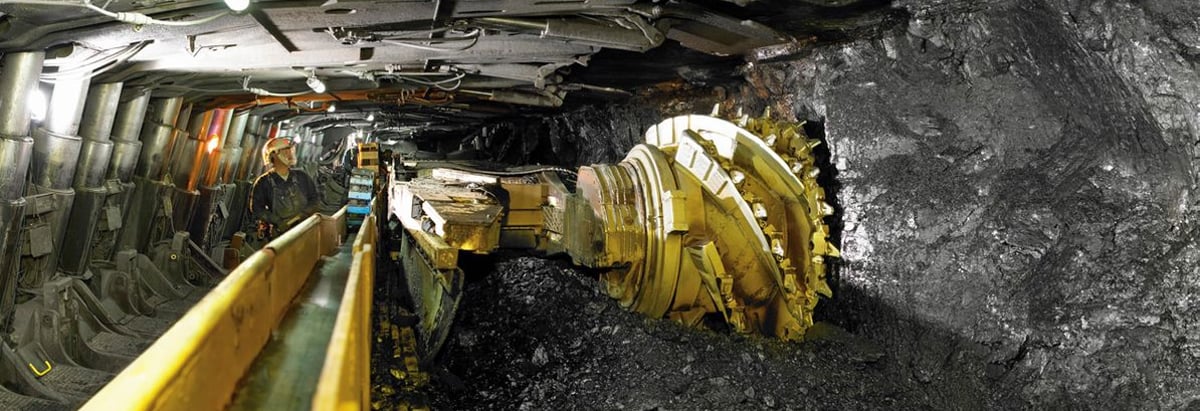Stock Analysis
- Hong Kong
- /
- Oil and Gas
- /
- SEHK:1393
The Return Trends At Hidili Industry International Development (HKG:1393) Look Promising

What are the early trends we should look for to identify a stock that could multiply in value over the long term? Firstly, we'll want to see a proven return on capital employed (ROCE) that is increasing, and secondly, an expanding base of capital employed. Basically this means that a company has profitable initiatives that it can continue to reinvest in, which is a trait of a compounding machine. Speaking of which, we noticed some great changes in Hidili Industry International Development's (HKG:1393) returns on capital, so let's have a look.
Understanding Return On Capital Employed (ROCE)
For those who don't know, ROCE is a measure of a company's yearly pre-tax profit (its return), relative to the capital employed in the business. To calculate this metric for Hidili Industry International Development, this is the formula:
Return on Capital Employed = Earnings Before Interest and Tax (EBIT) ÷ (Total Assets - Current Liabilities)
0.038 = CN¥256m ÷ (CN¥13b - CN¥6.6b) (Based on the trailing twelve months to June 2023).
Therefore, Hidili Industry International Development has an ROCE of 3.8%. In absolute terms, that's a low return and it also under-performs the Oil and Gas industry average of 6.3%.
Check out our latest analysis for Hidili Industry International Development
While the past is not representative of the future, it can be helpful to know how a company has performed historically, which is why we have this chart above. If you're interested in investigating Hidili Industry International Development's past further, check out this free graph of past earnings, revenue and cash flow.
What Does the ROCE Trend For Hidili Industry International Development Tell Us?
We're glad to see that ROCE is heading in the right direction, even if it is still low at the moment. The numbers show that in the last five years, the returns generated on capital employed have grown considerably to 3.8%. The company is effectively making more money per dollar of capital used, and it's worth noting that the amount of capital has increased too, by 434%. This can indicate that there's plenty of opportunities to invest capital internally and at ever higher rates, a combination that's common among multi-baggers.
One more thing to note, Hidili Industry International Development has decreased current liabilities to 50% of total assets over this period, which effectively reduces the amount of funding from suppliers or short-term creditors. So shareholders would be pleased that the growth in returns has mostly come from underlying business performance. Nevertheless, there are some potential risks the company is bearing with current liabilities that high, so just keep that in mind.
The Key Takeaway
To sum it up, Hidili Industry International Development has proven it can reinvest in the business and generate higher returns on that capital employed, which is terrific. And since the stock has fallen 53% over the last five years, there might be an opportunity here. That being the case, research into the company's current valuation metrics and future prospects seems fitting.
Hidili Industry International Development does have some risks, we noticed 6 warning signs (and 2 which don't sit too well with us) we think you should know about.
If you want to search for solid companies with great earnings, check out this free list of companies with good balance sheets and impressive returns on equity.
Valuation is complex, but we're here to simplify it.
Discover if Hidili Industry International Development might be undervalued or overvalued with our detailed analysis, featuring fair value estimates, potential risks, dividends, insider trades, and its financial condition.
Access Free AnalysisHave feedback on this article? Concerned about the content? Get in touch with us directly. Alternatively, email editorial-team (at) simplywallst.com.
This article by Simply Wall St is general in nature. We provide commentary based on historical data and analyst forecasts only using an unbiased methodology and our articles are not intended to be financial advice. It does not constitute a recommendation to buy or sell any stock, and does not take account of your objectives, or your financial situation. We aim to bring you long-term focused analysis driven by fundamental data. Note that our analysis may not factor in the latest price-sensitive company announcements or qualitative material. Simply Wall St has no position in any stocks mentioned.
About SEHK:1393
Hidili Industry International Development
An investment holding company engages in the mining, manufacturing, and sale of raw and clean coal in the People’s Republic of China.


